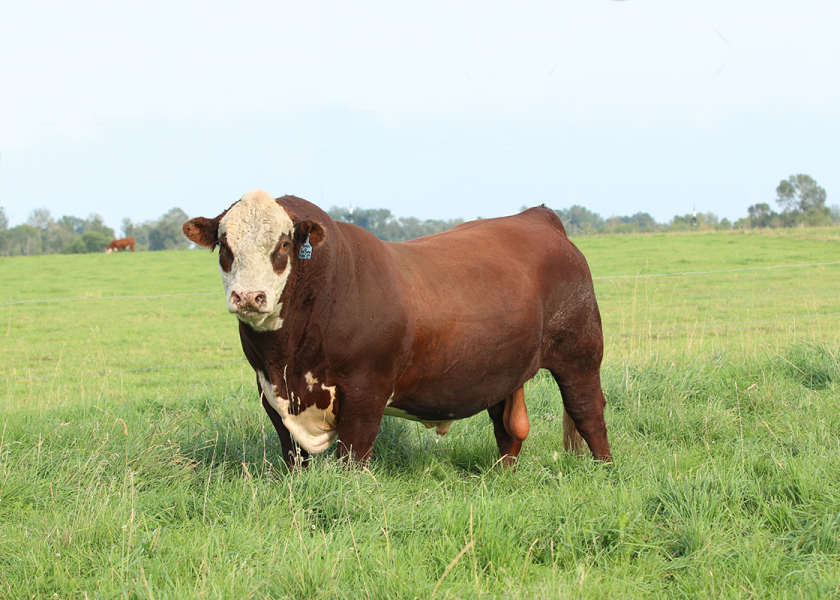The Impact of Bull Selection – Part 1

This week we take a look at an example of what happens to expected herd performance in the next generation based on the bull we use.
First, last fall at weaning we took the following measures of herd performance.
- 1,400 pound average mature cow size (4 – 7 year old cows)
- 85% pregnancy rate
- 82% calf crop weaned
- Average weaning weight 500 pounds
- Pounds of Calf Weaned/Exposed Female = 410
This data indicates that we need to improve the Pounds of Calf Weaned/Exposed Female on a whole herd basis to improve the profit potential of this operation. Traits of economic significance to improve this number are weaning weight, cowherd fertility, cow milk level and mature weight of cows. An EPD exists for each and can be used as a basis of selection to improve the 410 value.
In this example, we use herd bulls as rotational sires, selecting the best 20% of heifers to develop as replacements, and sell all other calves at weaning.
Since genetic values are comparable across time and geography, we can use the registration numbers of the five bulls used over the past decade that sired our existing cowherd, and find the following EPDs specific to our selection goal:

Now we consider the genetic values of two new potential herd bulls.

By comparing the EPDs of the new bulls we are considering to the five bulls that sired our existing cowherd, we can predict genetic change expected in the next generation of cows in our operation. For example: Bull 2 should raise weaning weights by 30 pounds and mature weights by 34 pounds. Bull 1 should sire daughters six percent more likely to get pregnant and raise a calf to weaning while lowering mature weight of cows by 20 pounds. Neither bull is expected to change the milk level of the cowherd.
The question is, which bull transmits more profit potential to this operation? Take some time to consider the question. I will give my answer next week in part 2 of this article.
Mark Johnson explains how to read an EPD report and using it to select a bull on SunUp TV from March 12, 2021. https://www.youtube.com/watch?v=EfbIx3tCzK8







